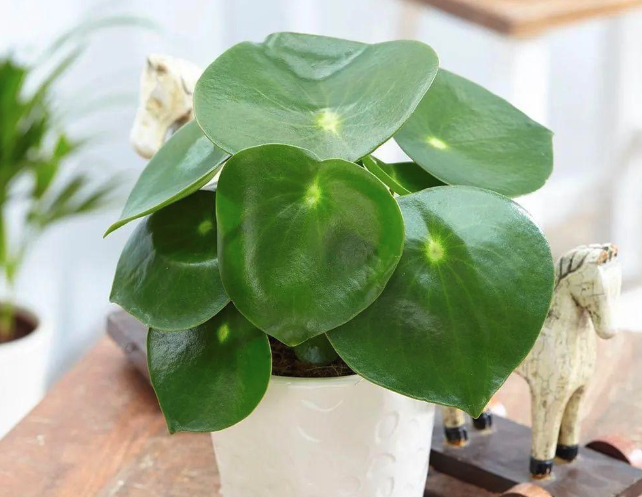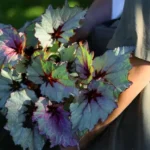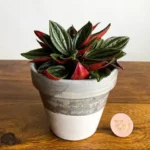Meet Peperomia Polybotrya: A Charming Heart-Shaped Houseplant
Peperomia polybotrya, often known as the Raindrop Peperomia, is a beloved species among houseplant enthusiasts. Named for its glossy, raindrop-shaped leaves, it has earned a special place on windowsills and plant shelves for its compact growth habit and unique foliage. If you’re looking for a low-maintenance, visually striking indoor plant, this is a wonderful option. Whether you’re a seasoned plant parent or just beginning your journey into indoor gardening, learning how to care for this easygoing species is both fun and rewarding.
Understanding Peperomia Polybotrya
Originally native to the tropical rainforests of South America, particularly Colombia and Peru, Peperomia polybotrya thrives in environments with high humidity and filtered light. It belongs to the Piperaceae family, which includes more than 1,000 species. Though often mistaken for the popular Chinese Money Plant (Pilea peperomioides), Peperomia polybotrya differs in texture and growth characteristics.
This plant typically grows to about 12–14 inches (30–35 cm) tall and forms a bushy, upright habit. Its succulent-like leaves are thick, waxy, and shaped like teardrops or raindrops—hence its nickname. Because of its modest size and aesthetic foliage, it’s an excellent desk or shelf plant.
Ideal Light and Location
Getting the right lighting conditions is key to keeping your Raindrop Peperomia healthy and vibrant. In its natural environment, this plant grows under the protective canopy of taller trees, which means it prefers indirect or filtered light.
- Bright, Indirect Light: Place your plant near a north or east-facing window where it gets soft morning or diffused light throughout the day.
- Avoid Direct Sun: Direct sunlight may scorch the leaves, causing discoloration or crispy brown edges.
- Low Light Tolerant: While it can survive in low-light conditions, the growth will become slower, and the plant may look leggy over time.
A south or west-facing room can still work—just be sure to filter the light with sheer curtains or place the plant a few feet away from the window.
Watering Requirements
Like many semi-succulent plants, Peperomia polybotrya stores water in its fleshy leaves and stems, which helps it withstand short dry spells. However, it’s important not to overwater, as soggy soil can quickly lead to root rot.
- Let Soil Dry Out: Allow the top 1–2 inches of soil to dry before watering again.
- Use the Finger Test: Insert your finger into the soil—if it feels dry to the touch, it’s time to water.
- Drainage is Crucial: Always use pots with drainage holes and never let the plant sit in standing water.
During the growing seasons (spring and summer), you might need to water once a week, while in the dormant period (fall and winter), watering every two to three weeks is usually sufficient. Look for signs like droopy leaves (underwatering) or yellowing leaves and mushy stems (overwatering) to guide your care.
Choosing the Right Soil Mix
A well-draining potting mix is essential for preventing root rot and encouraging healthy growth. Peperomia polybotrya enjoys a loose, airy mix that retains enough moisture without becoming compacted.
- Ideal Soil Components: A high-quality indoor potting mix blended with perlite or coarse sand works well.
- Optional Additions: A small amount of orchid bark or coco coir can improve aeration and mimic the plant’s native epiphytic environment.
You can also purchase a pre-made succulent or cactus mix and amend it with organic matter if you want to build your own custom blend.
Humidity and Temperature
Given its tropical origins, Peperomia polybotrya appreciates moderate to high humidity. That being said, it’s also quite adaptable and can thrive in typical household environments if other conditions are balanced.
- Humidity Range: 40–60% is ideal, but the plant can tolerate slightly lower levels if kept away from drafts and heating vents.
- Temperature Range: Aim for 65–80°F (18–27°C). Avoid exposing it to temperatures below 50°F (10°C).
- Humidity Boost: Use a room humidifier, pebble tray, or group plants together to create a microclimate with better humidity.
Fertilizing Tips
Peperomia polybotrya isn’t a heavy feeder, but it does benefit from light fertilizing during its active growing months. Proper nutrition supports healthy foliage and steady growth.
- Fertilizer Type: Use a balanced, water-soluble houseplant fertilizer diluted to half strength.
- Feeding Schedule: Apply once a month from early spring to late summer. Stop feeding during fall and winter when growth slows down.
- Avoid Overfertilizing: Too much fertilizer can lead to salt build-up in the soil and damage the roots.
Pruning and Maintenance
Peperomia polybotrya is a low-maintenance plant that doesn’t require frequent pruning. However, basic upkeep will keep it looking tidy and encourage bushier growth.
- Remove Yellow Leaves: Trim away any yellow or damaged leaves to prevent pests and maintain appearance.
- Pinch for Bushiness: Pinching the tips of new growth encourages lateral branching.
- Clean Leaves: Use a damp cloth to wipe off dust and keep leaves glossy and photosynthetically efficient.
Propagation Methods
Propagation is a great way to expand your collection or share with friends. Peperomia polybotrya can be propagated through leaf or stem cuttings.
How to Propagate by Stem Cutting:
- Using clean scissors, snip a healthy stem with at least one node and leaf attached.
- Let the cutting callous over for a few hours to prevent rot.
- Place the cutting in moist potting mix or a water-filled container.
- Keep in a warm, bright spot with indirect light.
- Roots usually develop within 2–4 weeks. Once rooted, move to a small pot with soil.
Leaf cuttings can also be rooted similarly, although stem cuttings tend to have a higher success rate.
Common Issues and Troubleshooting
Most problems with Raindrop Peperomia arise from incorrect watering or poor lighting. Here’s how to tackle a few common scenarios:
- Yellowing Leaves: Often a sign of overwatering or root rot. Check soil moisture and drainage.
- Wilting or Droopy Leaves: Can indicate underwatering or extreme temperature swings.
- Leaf Drop: May occur due to shock from repotting or low humidity levels.
- Pests: Monitor for mealybugs and spider mites. Remove pests with insecticidal soap or neem oil.
If you notice slow or stunted growth, it’s worth evaluating light levels and your watering routine, especially during winter.
Final Thoughts
Peperomia polybotrya is a delightful addition to any houseplant collection. Its adorable raindrop-shaped leaves and easygoing nature make it perfect for beginners and experienced indoor gardeners alike. As long as you provide it with bright, indirect light, allow the soil to dry between waterings, and protect it from temperature extremes, your Raindrop Peperomia will thrive for years to come.
Whether placed on a sunny shelf, office desk, or part of a lush indoor jungle, this compact beauty will reward you with glossy, evergreen charm—and maybe even inspire you to explore other members of the diverse Peperomia family.
References
- Botanical Society of America. (2020). Piperaceae Family Overview. Retrieved from https://www.botany.org
- RHS Royal Horticultural Society. (2023). Peperomia houseplants: care and growing guide. Retrieved from https://www.rhs.org.uk
- National Gardening Association. (2022). Peperomia polybotrya: Plant Care and Growing Tips. Retrieved from https://garden.org








